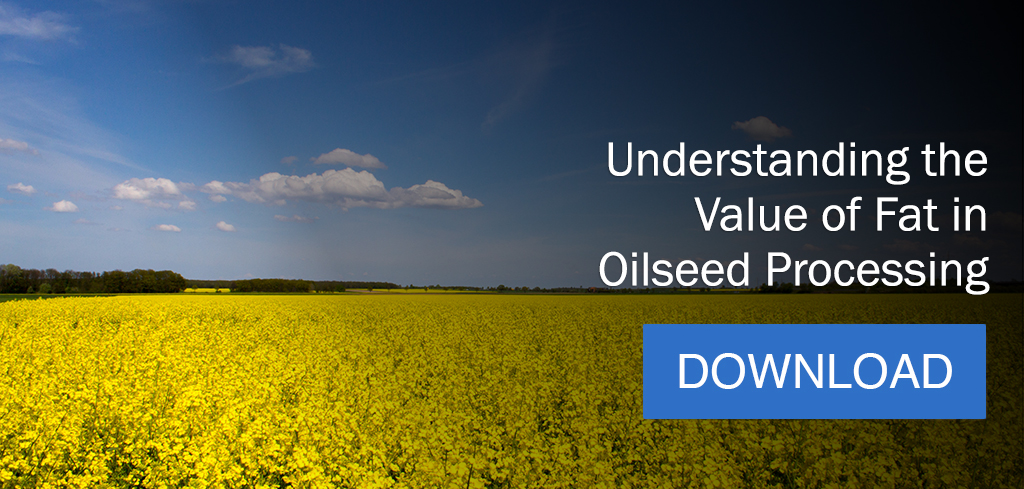
The main goal of any oilseed processing plant is to extract oil. But what makes this oil so valuable for so many different uses? Technically speaking, it’s all about triacylglycerol, more commonly known as triglyceride, which is basically a technical term for fat. The value of any type of oil, whether for edible or industrial use, is determined by the triglycerides in oilseeds.
Although the quality and characteristics of various oils depend on the natural composition of each seed, the extraction methods and equipment used in processing also play a major role in determining the value of oil. By understanding how variations in the extraction process can affect the chemical makeup of triglycerides in oilseeds, processors can optimize their systems to enhance the quality and value of the oil they produce.
Essential energy
As Mother Nature’s ultimate energy storage, triglycerides in oilseeds provide energy for seeds to germinate and grow into plants. Triglycerides also supply energy-dense nutrients to our diets, providing 2.5 times as much energy as carbohydrates or proteins. While carbs supply immediate energy, triglycerides provide energy reserves that serve many important biological functions, including:
- Absorbing fat-soluble vitamins like A, D, and E
- Regulating body temperature
- Facilitating brain and nerve functions
Triglycerides comprise three fatty acid chains attached to a glycerol molecule, hence its scientific name: triacylglycerol. The length and structure of these chains depend on the number of carbon atoms and double bonds holding them together, which determines the qualities of the oils they produce.
For example:
- If there are no double bonds, the fatty acid is said to be “saturated” with hydrogen. These molecules form a straight chain, allowing them to pack together tightly. That’s why saturated fats, like coconut oil, tend to be solid at room temperature.
- If there is one double bond between carbon atoms in the chain, the fatty acid is “monounsaturated.” These molecules form a curved structure that prevents them from stacking neatly, making unsaturated fats, like canola oil, likely liquid at room temperature.
- If there are multiple double bonds in the chain, the fatty acid is “polyunsaturated.” This category includes omega-6 and omega-3 fatty acids, which are found in soybean oil and sunflower seed oil.
Most fats and oils contain a combination of different fatty acids. For example, the triglycerides in oilseeds like soybean include a mix of polyunsaturated fatty acids like linoleic acid (51%) and alpha-linolenic acid (7-10%), monounsaturated fatty acids like oleic acid (23%), and saturated fatty acids like palmitic acid (10%) and stearic acid (4%). This balance of various triglycerides in oilseeds determines the nutritional qualities of unsaturated fats compared to saturated fats, as well as the functional properties in industrial drying oils like linseed oil and tung oil.
Protecting triglycerides in oilseeds
Heat treatment is an essential step during oilseed processing, but it can be a double-edged sword when it comes to enhancing the quality and value of triglycerides in oilseeds.
Before oil extraction, heat treatment prepares oilseeds for more efficient pressing by rupturing the cell walls to release the oil trapped inside. Many oilseeds are roasted or conditioned with heat before entering the expeller press to help improve oil yields.
However, excessive heat treatment can cause oil oxidation, breaking down the triglycerides in oilseeds to generate free fatty acids, which can lead to:
- Loss of nutrients
- Reduced shelf-life
- Unsavory flavors and aromas
- Harmful byproducts
Oils high in polyunsaturated fats are particularly sensitive to heat. As temperatures and heat exposure times increase during processing, more of the triglycerides in oilseeds are oxidized, generating more free fatty acids that must be removed to refine the oil. The more free fatty acids that have to be removed, the more profit a processor loses.
The key is controlling temperatures and heat exposure times with the right extraction equipment to protect the quality and value of the triglycerides in oilseeds. Mechanical screw presses like the Anderson Oil Expeller® generate only small amounts of frictional heat while crushing seeds—enough to break down the cellular structure but not enough to overheat the oil. Upstream of the expeller press, an extrusion system like the Anderson Dox™ Extruder quickly cooks seeds with a short residence time of about 20 to 30 seconds, compared to 20 or 30 minutes in a traditional cooker, which helps preserve the quality of the oil.
A comprehensive process audit from Anderson International can help analyze the quality of triglycerides in oilseeds at every step of the extraction process to pinpoint specific steps that could damage oil quality and impede oil recovery. By keeping a close eye on heat treatment and other factors that impact oil quality, processors can enhance the value of the oil they produce to command top dollar for their product.
To learn more, download Anderson’s guide on preserving the value of triglycerides in oilseeds.
